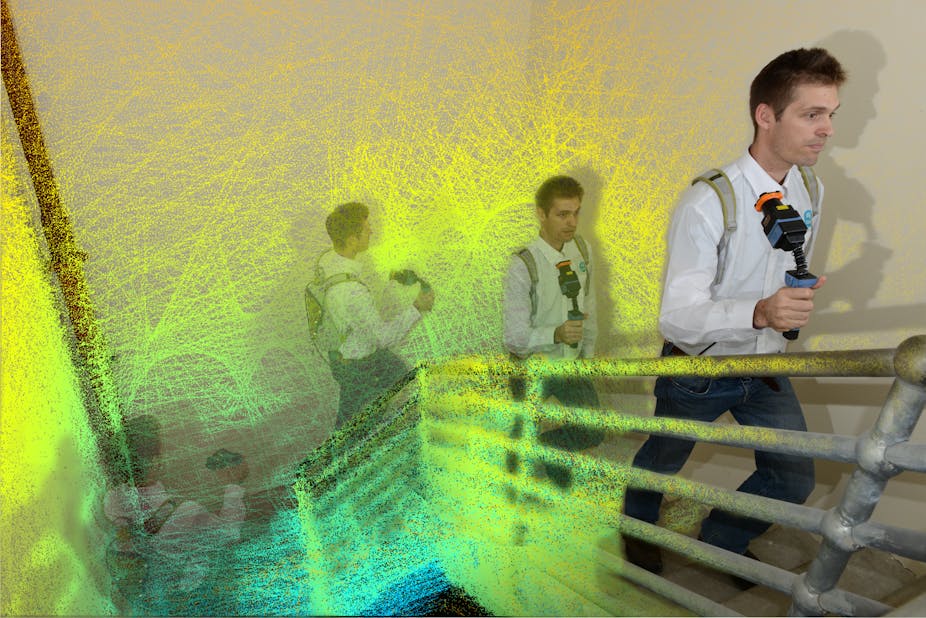Amid the gloom about the prospects for manufacturing in Australia — and the difficulties facing an economy dominated by small businesses (nearly 90% of Australian manufacturing capacity) — there is some cause for optimism. A new generation of lightweight, assistive robots looks to provide small to medium enterprises (SMEs) with new options to improve their competitiveness and meet the challenges of high costs and a shortage of skilled workers.
The news is good for workers, too. Robotic “smart tools” offer a means of removing danger and monotony from the work environment and, in striking contrast to conventional beliefs, provide a way to retain the existing workforce for longer.
Studies have shown that robots can boost productivity, but this productivity dividend is dependent on a human workforce able to set them up, maintain them, and make creative decisions about how best to complete work tasks. In a US case study of Marlin Steel, introduction of robots not only boosted quality of company product, but increased employee remuneration.
The manufacture of robots is a growing source of employment. A 2011 report commissioned by the International Federation of Robotics found that 150,000 people worldwide are already employed in the engineering and assembly of robots.
This report also identifies use of robotics in SMEs as essential to win back manufacturing from countries with low labour costs. In this case, the introduction of robots is capable of maintaining the viability of manufacturing in developed countries – and preserving manufacturing jobs.
Assistive robotics offer a high-productivity solution that could also help Australian manufacturing integrate into regional value chains, as recommended in the recent Asian Century white paper.
Lightweight robots can be integrated into the Australian workplace as assistants to workers in three ways.
The first is as “intelligent tools”, which work together with human workers. Mobile assistants, manipulators, “smart” picking, lifting and handling systems, and robotic welders, gluers and assemblers enable automation of short-run production processes, and provide a flexible solution to increase efficiency of production.
Secondly, robots can also be used as tools to augment the abilities of human workers in manufacturing processes. Powered exoskeletons enable workers, regardless of age or gender, to lift and manipulate heavy loads safely. Wearable machine vision systems can alert workers to workplace hazards in real-time, including hazards which can’t be detected visually, such as radiation and high temperatures. Mobile assistive robotic trainers and tele-immersive training systems enable experienced staff to remotely mentor workers who are new to a work environment.
The third way is as “smart” field tools, which enable human workers to manufacture items under hazardous or challenging conditions. Tele-operated mobile tools and vehicles are already in use in the mining industry, enabling work to be supervised remotely in an environment that is safe and comfortable for workers. Rigs which facilitate micro-manipulation and micro-assembly enable workers to conduct micro-assembly of complex items without strain to eyesight. Virtual and augmented reality systems allow workers to manipulate tools while remote from the factory floor, therefore reducing risks of work-related injury such as repetitive strain and injuries from use of tools.
So why is robotics changing? Conventional industrial robots — such as those used in automotive manufacturing — are heavy, programmed for one task, fixed in place on the factory floor, and expensive to buy, install, program and maintain. They are also potentially hazardous to humans, so workers are usually excluded from the robot workspace. But the next generation of lightweight robots is different.
A number of technological advances have made this new generation of lightweight robots possible.
First, the next generation of robots can “see” the workplace using advanced vision systems (including stereo and infrared cameras and multi-modal imaging), high precision sensors and perception algorithms.
Secondly, the new generation of robots is mobile. They know where they are and can navigate within the workplace thanks to navigation, localisation and mapping technologies – such as Wi-Fi localisation, beacon-based navigation, simultaneous localisation and mapping (SLAM), and accurate 2D or 3D modelling.
Importantly, human workers are now able to easily communicate with robots via voice and visual gesture recognition. Sophisticated human-robot interactive interfaces allow shared autonomy and human supervisory control. Additionally, augmented and virtual reality robotic systems allow workers to work remotely in hazardous or physically demanding working environments and to tele-operate and tele-supervise remote equipment. Emerging global high-speed wireless communication systems such as the NBN provide the required infrastructure for these technologies.
Manipulation technologies, including force-amplifying exoskeletons (frameworks worn by workers to provide mobility and lifting assistance), dexterous manipulation (grasping and moving complex objects using robotic “fingers” or claws), and multi-robot cooperation make for a working environment that is safer for the workforce and enable any worker – regardless of sex or age – to effectively perform physically onerous or dangerous tasks in complete safety. Robotic tools similar to existing micro-surgery rigs enable workers to perform miniature component manufacturing and assembly tasks with precision and dexterity – without risk to their health.
Finally, the new generation of robots would not be possible without smart fabrication. Miniaturisation and smart and lightweight materials make for small, light, smart robots. These robots can move rapidly around a workplace, respond to commands to fetch tools, rapidly shift stores of materials and finished product, and complement human activities.

